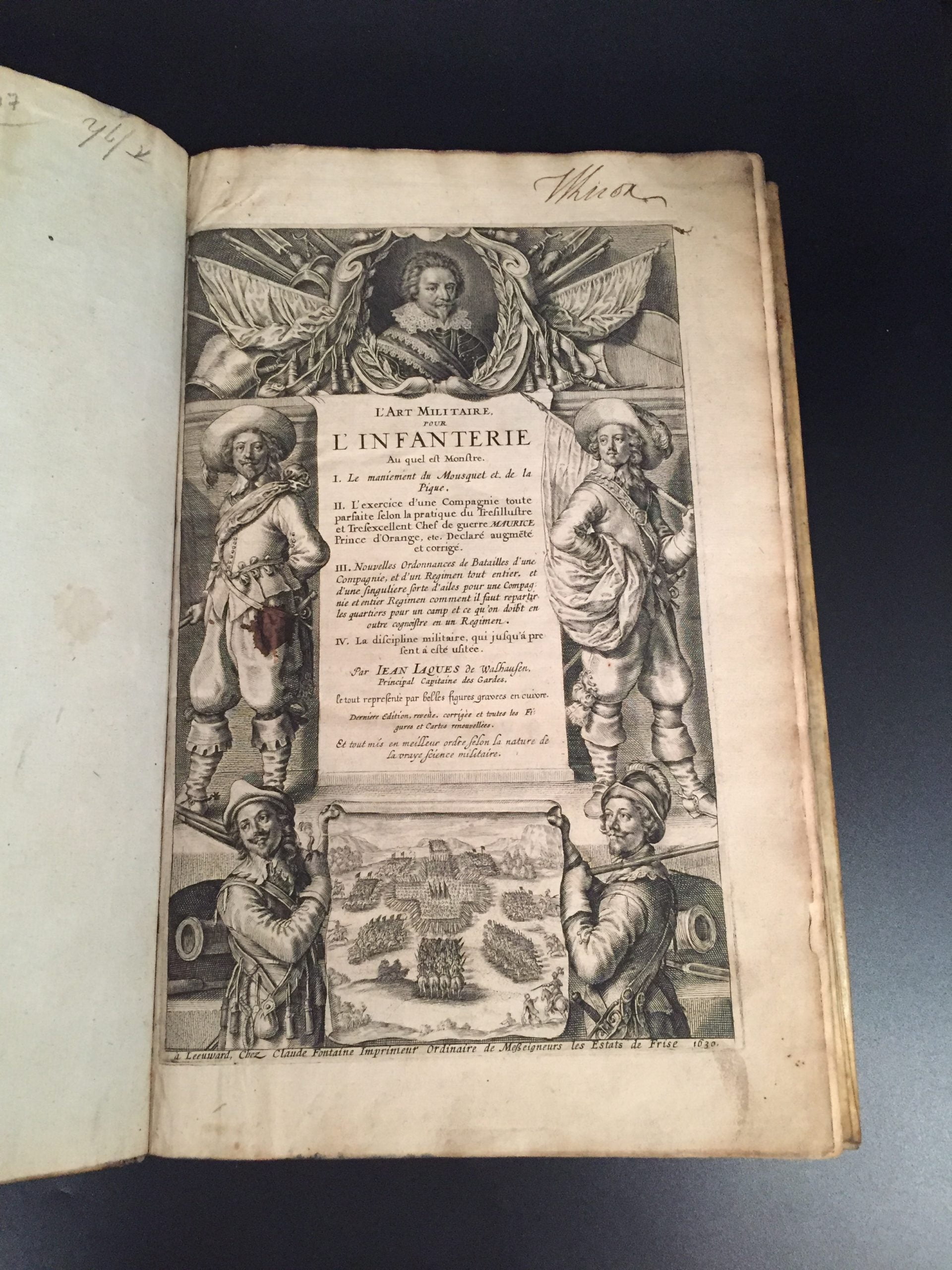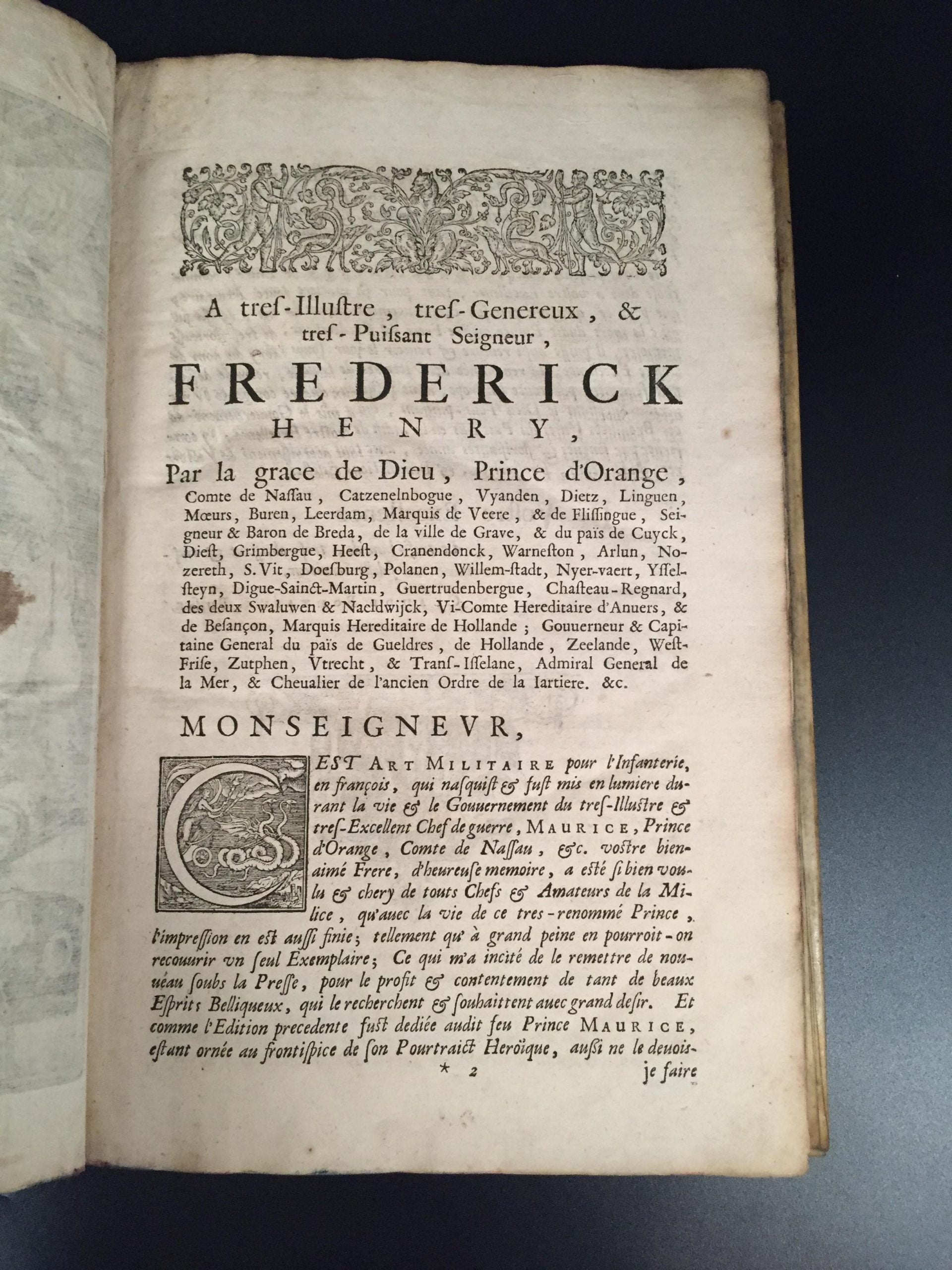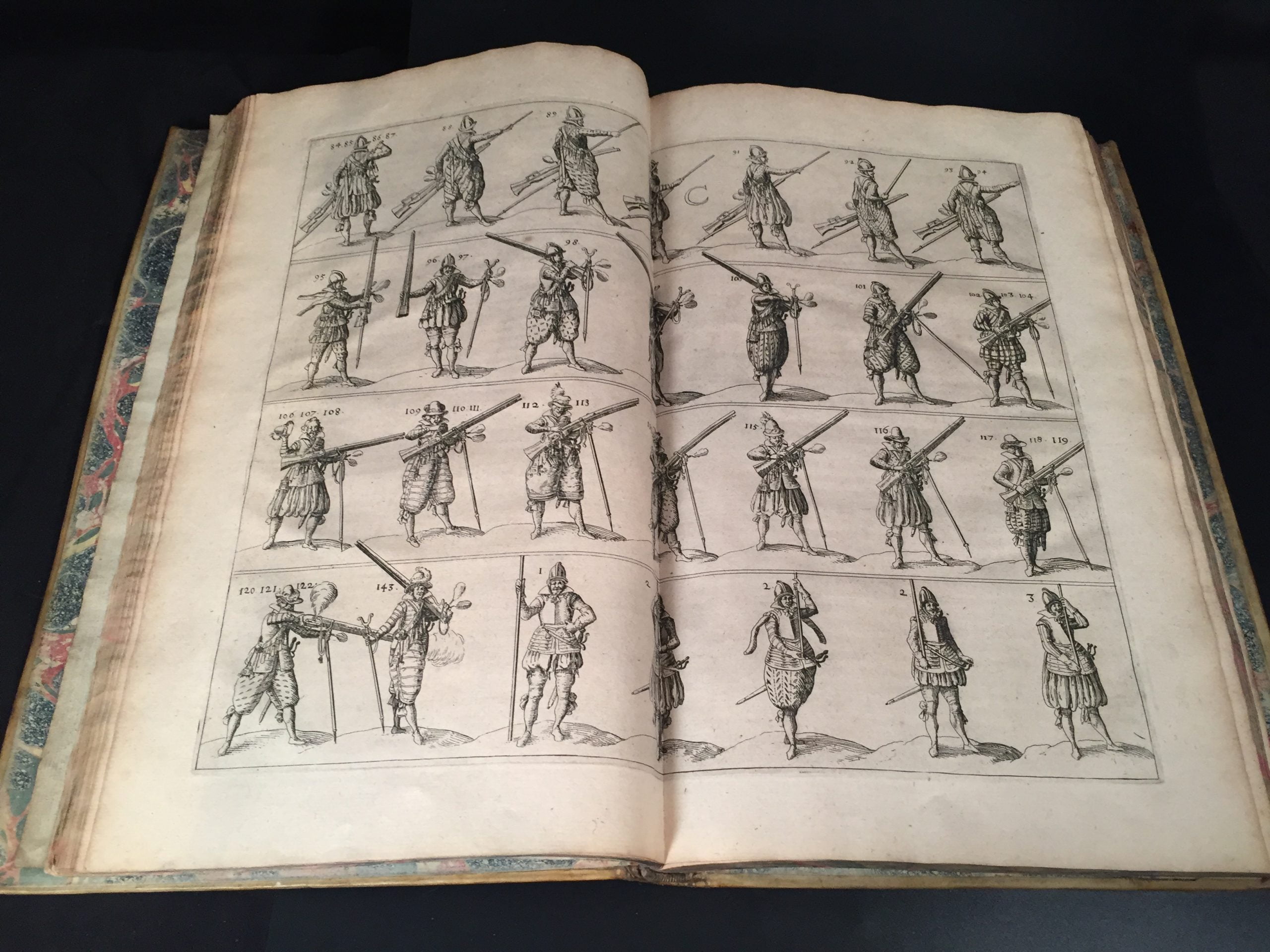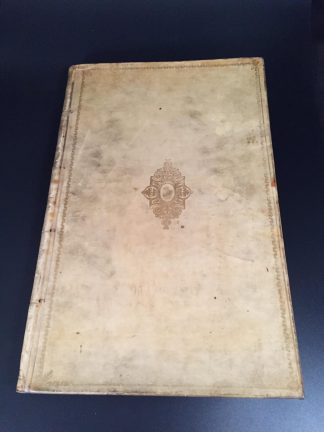WALLHAUSEN, Johann Jacobi von
L’art militaire, pour l’infanterie.
Leeuwarden, Claude Fontaine, 1630£2,750.00
Folio. pp. (xxiv) 152. *-2*4, A-T4. Roman letter, some Italic. Very fine engraved title-page, portrait of the author at head, two officers at sides, infantrymen below holding a battle scene between them, historiated woodcut initials, grotesque woodcut head- and tailpieces, typographical ornaments, 35 engraved plates (ten full page and 25 double-page), engraved armorial bookplate of Henry Edward Banbury on pastedown, seventeenth century autograph ‘Whicox’ at head of t-p. Light age yellowing, fractional dust soiling on margins of t-p, rare little mark or spot. A very good copy in C17th vellum gilt, engravings in fine dark impression, covers bordered with a gilt scroll, arabesque gilt at centres, spine gilt ruled in compartments, gilt fleurons at centres, (a little rubbed) all edges marbled, boards slightly warped, a little soiled.
A very good copy of this important military work on infantry, finely illustrated by Theodore de Bry. The first edition of the important “L’Art Militaire pour L’Infanterie” was in German, published in Oppenheim (1615). A French translation was published in Frankfurt, and in Franeker in the Netherlands, the same year. These last editions are dedicated to Maurice, Prince of Orange-Nassau. The work was also translated in 1647 into Russian, the first secular book to be published in the Muscovite Tsardom. The plates depict exercises with musket and pike as well as camp layouts and the ordering of troops. Wallhausen was a proponent of new forms of warfare learnt in the wars of religion in Holland in which individuals were subordinated to rigid discipline which excluded independent initiative and yet sought to achieve far higher levels of collective flexibility and skill. The means to achieve this was through standardised drill, strictly imposed by officers on the base of instructions backed by printed texts. “The work of Johann Jacobi von Wallhausen, the most celebrated exponent of the Dutch reforms, regularly combines descriptions of ‘reformed’ small units, deployed in linear formation, with an extraordinary variety of rectangular, circular and geometrically diverse formations of infantry, intended to accommodate between 100 and 6000 soldiers. .. Although Wallhausen was appointed as professor at Johann von Nassau’s academy in Siegen in 1617, a year earlier he had dedicated his work ‘De la Milice Romaine’ to Ambrosio Spinola, commander of the Spanish army of Flanders from 1604 to 1629.” David Parrott. ‘Richelieu’s Army: War, Government and Society in France, 1624-1642’
Wallhausen’s work is also of great social interest. “Wallhausen, .. describes how soldiers and camp followers alike would descend on a farmhouse, even in supposedly friendly territory. pounce on livestock, break down doors, and pull out trunks and boxes while intimidating the inhabitants. When they has eaten all they could hold they took the horses and oxen and farmers carts and loaded them with objects they had stolen. “then ten to twelve women and as many soldiers and some six boys sit on top of the heavy packing like caterpillars in heads of cabbage” Wallhausen wrote “the vehicle is frequently so heavily overburdened that the horses or oxen cannot budge it.” For soldiers, women represented not simply sex but all the creature comforts, and the men vigorously resisted being separated from their female companions or servants. Walhausen described the situation in the German infantry: “A regiment of three thousand men usually had no less than three hundred vehicles and each wagon was filled to overflowing with women, boys children, prostitutes and plunder.”” Linda Grant De Pauw ‘Battle Cries and Lullabies: Women in War from Prehistory to the Present’.
Cockle 621; USTC 4028044. Sloos. ‘Warfare and the Age of Printing’ 05011In stock







